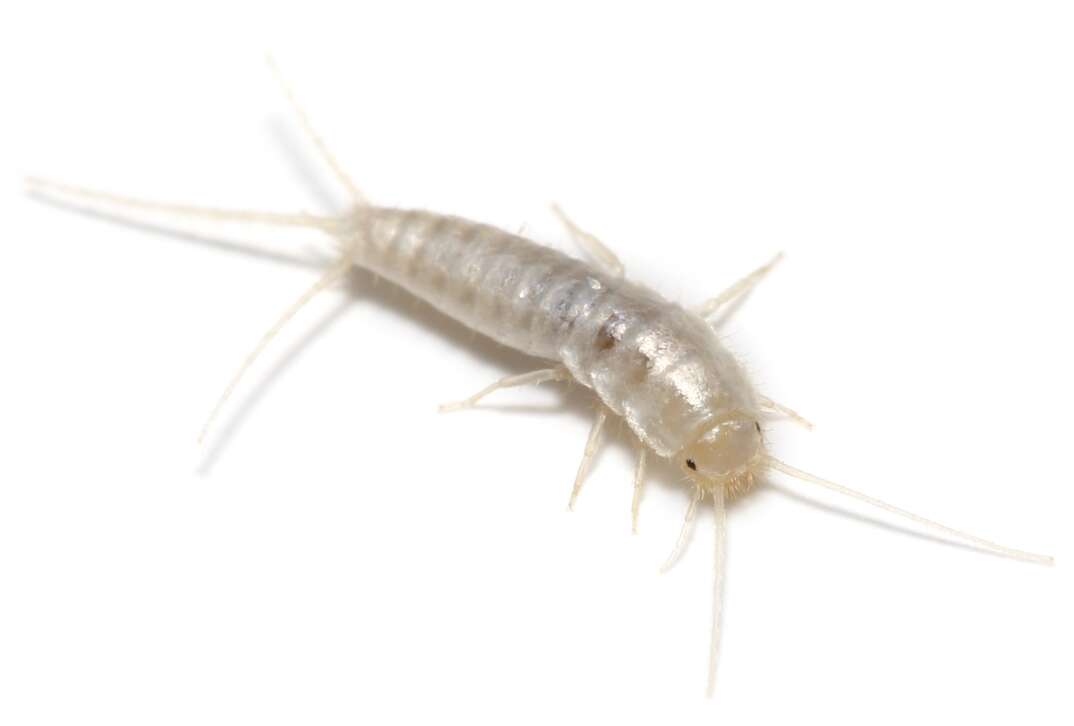Eek! Everything You Need to Know About Silverfish

Despite their name, silverfish are land-dwelling creatures that can cause significant issues if they decide to move into your home.
Read More Home Improvement Articles
Armed with the right knowledge, you can exterminate your six-legged housemates and stop them from returning.
What Are Silverfish?
Silverfish, also known as bristletails, are long, wingless insects that measure between 12 and 19 millimeters. They have a silvery, fish-like appearance, with long antennae and three bristles at the end of the body.
While silverfish can't hurt humans, they can be a real nuisance. These creatures can live off virtually anything inside your home, including wallpaper, books, fabric, certain adhesives and even dandruff. Therefore, a silverfish infestation can be highly destructive. They can also contaminate food with their feces and may trigger allergies in some people.
Silverfish are rapid and prolific breeders, meaning that a significant infestation can develop surprisingly quickly. It's important to tackle infestations as soon as you notice them.
Usually, silverfish live in dark, moist environments outside the home, such as compost heaps or gutters. However, they can get inside through small cracks in the windows, doors, floors or foundation. Once inside, they may start breeding, especially in damp areas like basements or bathrooms.
How Do You Know You Have a Silverfish Infestation?
Apart from large numbers of visible silverfish, there are various signs of a silverfish infestation. According to PestWorld, signs to look out for include:
- Yellowish stains on surfaces
- Tiny black granules (silverfish droppings) around your home
- Feeding marks, including holes, surface scratches or notches along the edge of infested areas
How Do You Get Rid of Silverfish?
There are several straightforward DIY silverfish extermination methods. While tackling the issue, consider switching to plastic boxes to store valuable items, as silverfish can easily nibble their way inside cardboard boxes. A combination of the following techniques can be effective.
Silverfish Traps
You can create your own silverfish traps using a glass jar. Cover the outside of the jar with tape so that the silverfish can climb inside and place a small amount of food bait inside. Anything starchy, such as grains or vegetables, makes great silverfish bait. Once inside, the silverfish can't climb out again because the glass is too slippery. Alternatively, you can purchase sticky traps to catch silverfish and other small pests.
Silverfish Poison
Various substances, such as boric acid, can kill silverfish. You can try buying silverfish poison and placing it in infested areas. However, these substances can harm humans and animals, so they're not a great option if you have children or pets.
Cedar Oil
Cedar oil is an effective silverfish deterrent because they hate the odor. Mixing a few drops of oil with some water inside a spray bottle and spraying it around your home can help you get rid of silverfish. Dried bay leaves can also deter silverfish and other insects.
Wet Newspaper
Silverfish love moist environments, so you can create an effective trap by wetting a rolled-up newspaper. After the silverfish set up home inside, you can discard the newspaper (and the silverfish inside) with your household trash.
Call a Professional
If you have a severe infestation or DIY methods don't work, it's time to book a professional silverfish extermination service. Exterminators can locate hidden infestations around your home and eradicate them using pesticides or fumigation. They may also use substances such as diatomaceous earth to stop the silverfish from breeding.
How Much Does Silverfish Extermination Cost?
Silverfish extermination usually costs between $200 and $700, and most homeowners pay around $400 to treat a 2,000-square-foot home. Treating a single room could cost as little as $150, while fumigating a large home could cost up to $9,000.
The method used to treat your silverfish infestation can also affect how much you pay. The most common treatment methods and the average cost per visit are:
- Pesticides: $150 to $300
- Diatomaceous earth: $200 to $400
- Fumigation: $2,000 to $6,000
How Do You Prevent Silverfish From Infesting Your Home?
One of the most effective ways to prevent a silverfish infestation is to seal any cracks where they could enter your home. Preventing moisture can also be effective, so consider investing in a dehumidifier and regularly ventilating damp rooms by opening the windows.
Removing food sources can also discourage silverfish from making your home their own. Keep starchy foods in airtight containers and remove items such as cardboard and stacks of paper as quickly as possible. Storing clothes and fabric items you don't need day-to-day in vacuum bags or plastic boxes can stop silverfish from eating them. It's also worth removing any piles of wood or leaves from the area around your home, as these can become breeding grounds that could eventually encourage silverfish to venture inside.
Elocal Editorial Content is for educational and entertainment purposes only. Editorial Content should not be used as a substitute for advice from a licensed professional in your state reviewing your issue. Systems, equipment, issues and circumstances vary. Follow the manufacturer's safety precautions. The opinions, beliefs and viewpoints expressed by the eLocal Editorial Team and other third-party content providers do not necessarily reflect the opinions, beliefs and viewpoints of eLocal or its affiliate companies. Use of the Blog is subject to the
Website Terms and Conditions.The eLocal Editorial Team operates independently of eLocal USA's marketing and sales decisions.



